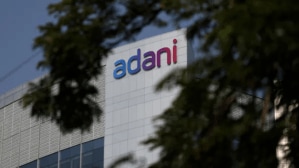Stay updated with the latest - Click here to follow us on Instagram
Only 42% students take midday meals: Survey
Only around 42 per cent of the total number of enrolled students are apparently taking midday meal in the primary and upper primary schools of Uttar Pradesh
Only around 42 per cent of the total number of enrolled students are apparently taking midday meal (MDM) in the primary and upper primary schools of Uttar Pradesh,a sample survey being carried out by the Gobind Ballabh Pant Social Science Institute (GBPSSI) has indicated.
The survey,commissioned by the state-level Midday Meal Authority (MDMA) in Lucknow,will cover a total of 1,000 schools in 10 districts of the state. So far,seven districts – Sitapur,Chhatrapati Sahuji Maharaj Nagar (Amethi),Kannauj,Mahoba,Aligarh,Basti and Chandauli – have been covered. The remaining three – Rampur,Lalitpur and Shrawasti – will be covered in July. The final report will be submitted to the MDMA before August 15.
The GBPSSI is also one of the empanelled institutions of the Union Ministry of Human Resource Development for Sarva Shiksha Abhiyan,of which MDM is a part.
In the 707 schools covered so far,the total number of enrolled students was 95,025. The total number of students shown on the MDM register as having taken the meal a day before the survey was shown to be 52,152. But on the day of the teas visit,this number came down to 39,731. Further,an actual head count of the children who have taken the meal revealed that the number was only 38,985. Thus out of the total number of enrolled students,52 per cent of them were shown to have taken the MDM a day before the survey team visited,which came down to 42 per cent when the team actually counted these students.
At the district level,the worst situation was recorded in Chandauli where only around 25 per cent of the total number of students were found to have taken the MDM on the day the team visited the schools.
The corresponding figures for other districts were: CSM Nagar (Amethi) 36.8 per cent,Kannauj (43.2 per cent),Mahoba (43.2 per cent),Basti (44 per cent),Aligarh (49.9 per cent) and Sitapur (50.7 per cent).
Project director Prof S K Pant said that minor differences in the figures within 10 per cent can be expected on account of various reasons.
But the huge gap is visible in all the districts on a consistent basis. It can be attributed to the inflated enrollment and attendance figures shown in the registers maintained by the schools, said Prof Pant. Finding the reasons behind such glaring gaps was not strictly within the purview of the project. But it clearly appears that various stake-holders involved in the scheme are interested in showing inflated figures to meet their own interests, said Prof Pant.
The survey also indicated that the role of NGOs in managing the programme is gradually increasing. In at least 20 per cent of schools surveyed,it was found that the NGOs were cooking and bringing the food to the school. In Kannauj,at least 12 NGOs were found to have been involved in managing the MDM affairs in 102 schools that were surveyed.
This trend too needs to be addressed because the policy guidelines say that the food should be cooked on campus and outsourcing should not be encouraged,particularly in rural areas, said Prof Pant.







